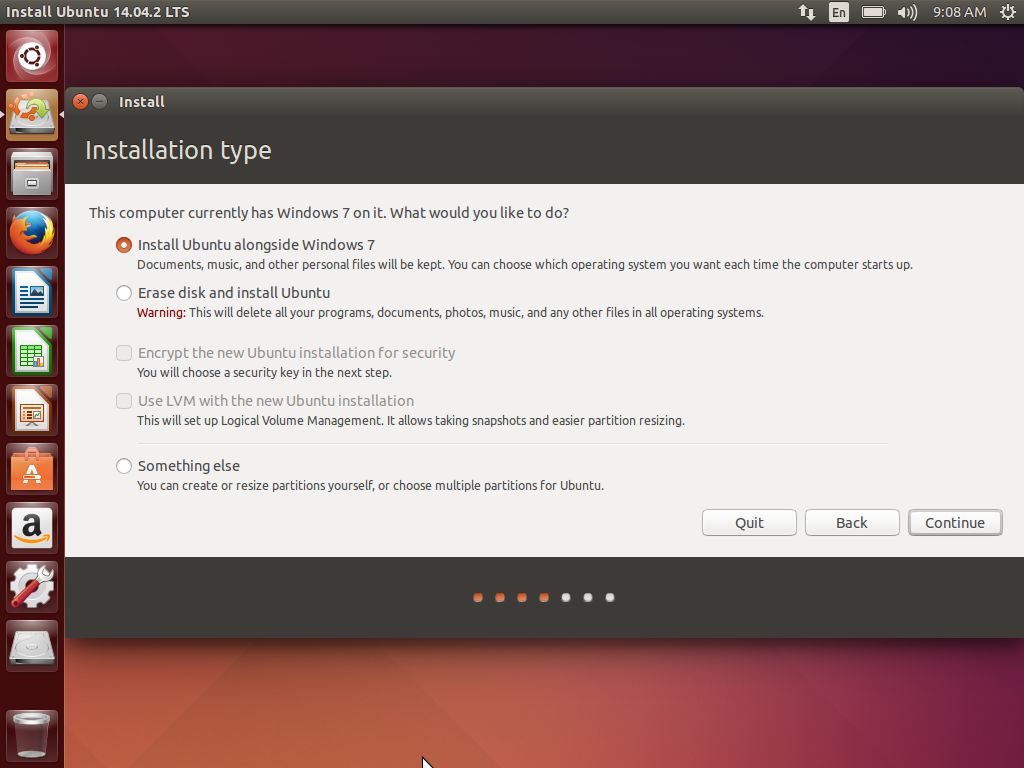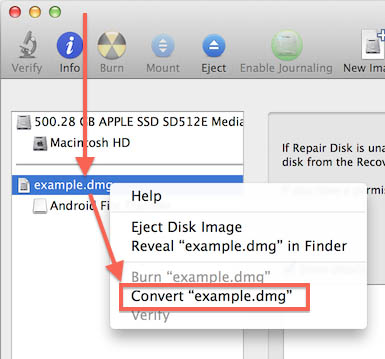Install Plover on Ubuntu Linux distribution Stable releases can be installed from a dedicated PPA, see ppa:benoit.pierre/plover for instructions. 2019-02-25 Note: The PPA method doesn't currently appear to work with Ubuntu 18.04 Bionic Beaver ( there is a listing for Xenial however ). Feb 22, 2018 how to decrypt dmg file in linux Ubuntu, Linux Mint, Kali Linux 1. Sudo apt update 2. Git clone decrypt 3. Ubuntu is a common variant of Linux, complete with a user-friendly interface and full flexibility in customising it via the Terminal window. Windows and Linux share the ability to open ISO files, which are similar to DMG files. Converting.dmg to.iso file in Ubuntu Linux Ubuntu is a common variant of Linux, complete with a user-friendly interface and full flexibility in customizing it via the Terminal window. Windows and Linux share the ability to open ISO files, which are similar to DMG files. May 16, 2018 So you’re running Linux on your computer, maybe Ubuntu, and you have some files with the.dmg extension. In this guide, we’re going to talk about how to open, mount, extract, and otherwise get your files from these pesky DMG images. You could always just extract the files on a Mac, then transfer them back to your Linux machine.
In this article we talk on How to install Ubuntu Linux From VirtualBox Image, which is pre-built Virtual Machine, with Ubuntu VirtualBox image you don’t need to first create a Virtual machine and Customize the Virtual Machine next download an Ubuntu ISO file and follow the complete installation process, we have an article on that as well How to Install Ubuntu Linux on VirtualBox in Windows 10, but with this installation you will have Ubuntu Linux Screen Resolution Problem, But when using a VirtualBox Image you don’t to know how to fix that or go for the step to fix screen resolution problem, because we already fixed that and create the Ubuntu Linux VirtualBox image,
Install dmg2img. Next, read the package information page and the manual page to see if it is useful to you. The application seems to convert.dmg to a file that can be mounted using the mount command: dmg2img file.dmg imagefile.img From your Wikipedia article, the next command seems to be available to do that.
So don’t want to make things complicated talking about that anymore so we directly for installation of Ubuntu Linux from VirtualBox image.
But if you want to know how to create your own Ubuntu Linux VirtualBox image as your own desired customization and configuration please follow this article, How to Create Ubuntu Linux VirtualBox Image Step by Step.
How to Install Ubuntu Linux From VirtualBox Image
First of all you need to download Ubuntu Linux VirtualBox Image Created by TechCrowder,
Step 1: Unzip Ubuntu VirtualBox Image
Right click on the File select extract here to unzip the VirtualBox image file.
Step 2: Open VirtualBox Virtualization Software
From the VirtualBox Left Menu Panel select Tools, Now you will see another Screen on the right side, like Preferences, Import, Export, New, Add. from these lists you have to Select Import.

Step 3: Import VirtualBox Image File
Dmg Linux
Click on the folder right of the empty Box to brow Ubuntu Linux VirtualBox Image.
Step 4: Confirm the VirtualBox Image File
Now you have selected Ubuntu Linux VirtualBox image File click on open, to add this image on VirtualBox.
Click Next.
Step 5: Appliance Settings and Virtual Machine Location
You will see a complete details of Your Virtual Machine which will be created after the import process, you don’t need to do any changes on this page just confirm the location of virtual machine out of C:Drive, any where in your physical PC you have available storage.
Step 6: Importing Virtual Machine

Be Petain this step will take few minutes to import the virtual machine,
Step 7 Importing Process Completed
After you successfully import Ubuntu VirtualBox Image you will see another Virtual Machine on left Side of VirtualBox select that click on start.
Step 8: Login Credentials
Wow you are done with Installing Ubuntu Linux From VirtualBox Image only just few clicks now you have a complete Ubuntu Linux Virtual Machine ready,
Note: The default Password for this VirtualBox image is “admin” only type admin on the password filed you will be login.
Your Ubuntu Linux is ready you can use, without having an issue of screen resolution problem, folder sharing, and USB port connectivity all are functional with this image.
Watch the Video How to Create and Install Ubuntu VirtualBox Image
Any Question:
if you have any question on how to create Ubuntu Linux Virtual Box image and Install Ubuntu Linux from VirtualBox Image use the comment section below we will try to reply to your comment as soon as possible.
So you’re running Linux on your computer, maybe Ubuntu, and you have some files with the .dmg extension. In this guide, we’re going to talk about how to open, mount, extract, and otherwise get your files from these pesky DMG images. You could always just extract the files on a Mac, then transfer them back to your Linux machine. But if you really want to do this on Linux, without having to rely on Mac, here’s how to do it.
What are DMG image files?
Simply put, it’s a kind of image file. But not an image like a jpeg is an image. DMG is Apple’s proprietary disk image format, native to Mac OS X. There are actually a whole bunch of different types, format and options within this format. There are options for encryption, compression, and different kinds of partition schemes, among others. Unfortunately, this can make things pretty confusing when we’re trying to gain access to the data contained in one of these images.
DMG images are typically a kind of Universal Disk Image Format (UDIF), although there are others, namely NDIF and SPARSE. Although the .dmg file extension is usually used, they can also sometimes have an .img extension, or in some cases no extension at all. Their MIME type is application/x-apple-diskimage.

The HFS/HFS+ (Mac OS Extended/Journaled) file system is typically used in DMGs. However, this isn’t always the case. You may also sometimes find FAT and ExFAT files systems, as well as variations on HFS.
Does my system support DMG?
Perhaps the biggest hurdle to overcome when trying to work with DMG files is working with the HFS file system (Mac OS Extended). Linux supports HFS through the “hfs” and “hfsplus” kernel modules.
There’s an easy way to test if your system has these kernel modules. Plug in a USB drive formatted with the Mac OS Extended file system. If your particular distribution doesn’t have the appropriate modules, you will likely get an error message. On Ubuntu, you’ll get a popup window declaring “Ubuntu: Unable to mount
Alternatively, we can see if the kernel module files are present with find:
We want to see two files: “hfs.ko” and “hfsplus.ko”. If find doesn’t return these files, your system probably doesn’t support HFS.
You could also try “modinfo”: modinfo hfs and modinfo hfsplus should return something like:
Install Dmg Files In Ubuntu Windows 7
If you get 'modinfo: ERROR: Module hfsplus not found' your system doesn’t have these modules.
Not all Linux kernels and distributions support HFS. This is especially the case for certain distributions that are a few years old. If you have kernel support for HFS, great! If not, don’t worry. There are still ways to extract data from your DMG files. While it’s nice to have the option to mount the images we’re working with, this is really the only functionality we’re losing without having the hfs and hfsplus modules. The two programs we’re going to use later on (P7ZIP and dmg2img) do not require kernel support to function.
What kinds of DMG images can be opened in Linux?
Dmg Files In Windows
This guide is about how to open, mount, and extract files from read/write, read only, and compressed DMG image files. The following partition schemes have all been tested with the techniques discussed here.
- Apple Partition Map
- CD/DVD (partitioned)
- CD/DVD (partitioned) with ISO data
- Hard disk
- Master Boot Record Partition Map
- No partition map
This guide does not cover how to handle sparse disk images (.sparseimage), sparse bundle disk images (.sparsebundle), or CD/DVD masters. DMG images with partition scheme types of “CD/DVD” and “GUID Partition Map” do not appear to work with the techniques described here.
Option 1: Mount the DMG
If the Linux distribution you’re on has HFS support in the kernel (Ubuntu 14.04.1 LTS supports it), it’s pretty easy to just mount the DMG image:
We’re using “sudo” because we need root privileges to mount things. The HFS+ file system type is specified with “-t hfsplus”. The “/mnt” at the end of the command specifies where we’re mounting the image.
Unmount the image with sudo umount /mnt
If you get a wrong fs type message like the one below, it means the DMG file is either of an unsupported type, or it’s compressed. Unsupported images include sparse images, sparse disk bundles, CD/DVD masters, and images with partition schemes of the CD/DVD or GUID Partition Map types.
Use “file” to learn a little more about the image file:
If you get image.dmg: x86boot sector that means it’s probably using a GUID Partition Map and isn’t supported. This isn’t good, however, it’s also not too terribly common.
What’s more common is to see something like this:
If mounting isn’t working, and this is what you’re seeing with “file image.dmg”, then you’re luck!. Our problems are being caused by compression. Linux doesn’t like to mount compressed DMG images. To get around this little obstacle, we’ll use dmg2img (see below).
Option 2: Use dmg2img for compressed images
So you have a DMG image that you can’t mount because it’s compressed. You’ve done “file compressed_image.dmg” and you got “compressed_image.dmg: bzip2 compressed data”. The fix? That’s easy: use dmg2img to convert it to an uncompressed image. Once you run the image through dmg2img you should be able to mount it no problem.
Don’t have dmg2img? It’s usually pretty easy to get using your distribution’s package management. On Ubuntu, you’d do:
Using dmg2img isn’t very difficult. Type “dmg2img” into the command line followed by the name of the DMG file you want to decompress. The Mac OS X version of Firefox is a good example of a compressed DMG file.
Install Dmg Files In Ubuntu Windows 10
Now mount the resulting .img file:
Option 3: Extract DMG contents with P7ZIP
P7ZIP is awesome. It’s the Linux/BSD version of 7-Zip. Check out their SourceForge page here With it you can literally extract files from any kind of image or archive. Just kidding… It doesn’t really work with every format conceivable. However, it can handle (in alphabetical order): ARJ, CAB, CHM, CPIO, CramFS, DEB, DMG, FAT, HFS, ISO, LZH, LZMA, MBR, MSI, NSIS, NTFS, RAR, RPM, SquashFS, UDF, VHD, WIM, XAR and Z. Impressed? I certainly am!
Installing p7zip is pretty easy using your distribution’s package management system. On Ubuntu with apt-get:
In addition to being able to extract data from compressed and uncompressed images alike, P7ZIP doesn’t require the HFS kernel modules at all. In the example below, we’re going to extract all of the files from “Firefox 33.1.1.dmg”. When we’re done, we’ll have a tidy little folder called “Firefox”.
Invoke P7ZIP to extract archives and images with “7z x”.
Notice that 7z extracted three files: “0.ddm”, “1.Apple_partition_map”, and “2.hfs”. To actually get to the files, we’ll need to run 7z again on “2.hfs”.
We picked “2.hfs” because it was the biggest of the three, meaning it was probably the one with the data. Simple but effective logic. After a few moments, you should have a folder called “Firefox” with all of the files from the original DMG.